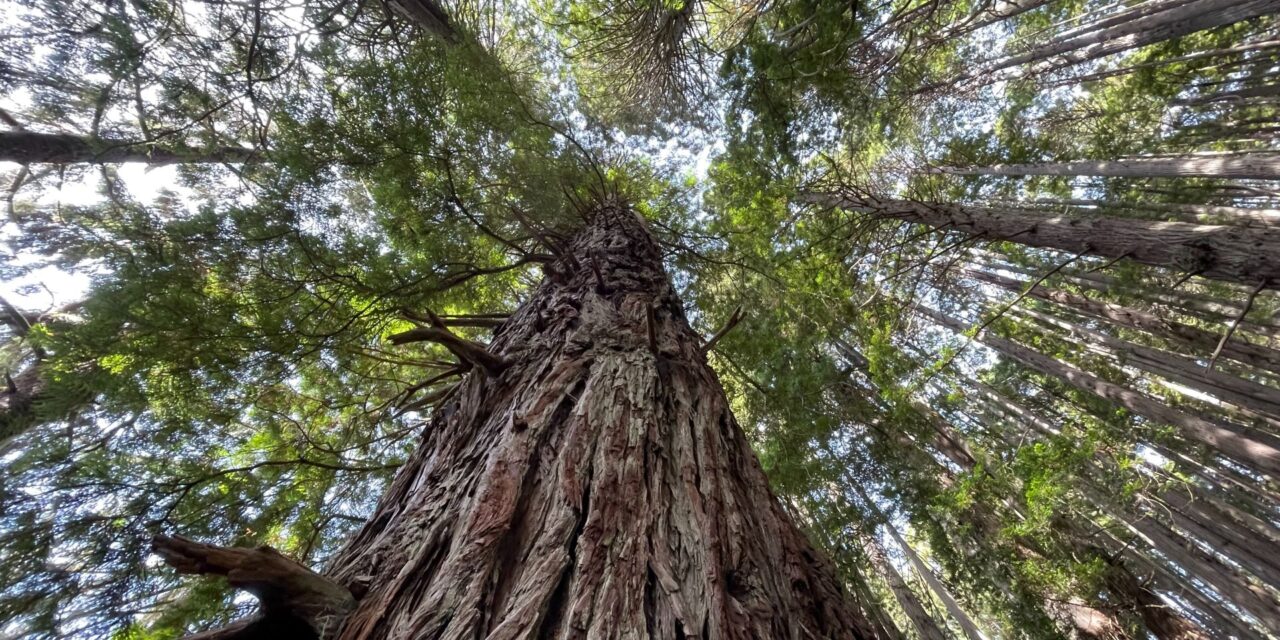Ten years ago, Christ & Cascadia published its very first articles. For the past decade, we’ve been facilitating thoughtful conversations on what it means to follow Jesus in Cascadia (the bioregion that includes SE Alaska, British Columbia, Washington, Oregon, Northern California, Idaho, Western Montana, and SW Alberta), with all its particularities. In that time, we’ve explored this region’s unique culture and how people are working within that culture to bring God’s shalom to this place.
To celebrate our 10-year anniversary, we want to share some of what we’ve learned.
Recently, we asked the question, in what ways are Cascadian Christians innovating for the sake of the gospel in this place? Looking through our articles, we saw three trends emerging. So, this essay is an overview of those three trends, including highlights of additional articles for understanding and exploration.
A shift in missions and outreach work from a paradigm of empowerment to one of copowerment
Followers of Jesus in Cascadia are recognizing that the historic paradigm for serving marginalized communities has often led to the dehumanizing and devaluing of these communities. Over the years, Christians often have equated spreading the gospel with cultural assimilation and disrespect. Instead of seeking to serve these communities, Cascadian Christians are finding ways to partner with them—approaching these communities with a desire to learn and grow even as they seek to help. Cascadian Christians are approaching their outreach work with greater cultural sensitivity and a belief that the Spirit is at work in all people.
“If [short-term mission] visitors can get past thinking of our people as ‘the mission field,’ SLAM (Students Learning about Missions) trips provide the opportunity for them to consider the possibility that the Yakama people, too, are and have always been beloved by Creator…and to understand that Creator has always been at work among our people from the beginning.”
Corey Greaves,
“Resistance & Reconciliation: Towards a New Paradigm for Short-Term Missions”
“Through our work on both sides, as congregants and inmates get to know each other in letters and phone calls, I’m reminded there’s a lot of hurt in churches, too. And despair. And loneliness. I think both sides of the ‘dike of the law,’ so to say—we need each other.”
Chris Hoke in Kristen Dailey Mosier’s article,
“Beneath the Beautiful Skin of the Earth: An Interview with Chris Hoke of Underground Ministries”
Also read:
“Path from Poverty: The Shared Work of Authentic Relationship,” Boni Piper & Agnes Kioko
“How Not to Serve the Native Church,” Forrest Inslee
A new theological understanding of Christianity’s relationship to nature
One cultural marker that tends to unite Cascadians is our love of nature. We are drawn to its beautiful forests, towering mountains, and plentiful bodies of water. However, many Christians in Cascadia have been impacted by the evangelical understanding that humanity is separate from nature and has been tasked to subdue it. This belief encourages human-centered practices in agriculture and industry that can lead to the destruction of natural habitats and ecosystems. Founded in a dualism much older than the evangelical movement, there is an understanding that faith is about achieving eternal salvation in an intangible, heavenly realm separate from the physical, created world.
Many followers of Jesus in Cascadia are rejecting this dualism, looking again at Scripture to find a better way of understanding humanity’s relationship with creation and discovering ways to serve God by advocating for practices that promote the flourishing of all God’s creation.
“It is really the Western church that has taught us for generations that we are to subdue, conquer, and objectify the natural world; that keeps us distant. My time in the forest has taught me to see things differently, to the point where I can say now that nature is my church. It is my place of worship. It is where I go to find God. I never feel closer to God than when I am standing among cedar trees or sitting beside a brook.”
Alycia Scheidel,
“Light Beyond the Veil”
“In a region that is particularly sensitive to environmental issues, Christian complicity in historic patterns of mismanagement and abuse, along with a lack of concern and engagement in the present, exposes a narrow view of discipleship and a truncated sense of justice that is hampering the Church’s witness. We are called to metaphorically ‘fish for people,’ but in Cascadia we must see the literal connections between the two.”
James Amadon,
“Where the Salmon Go”
Also read:
“Becoming Rooted: An Interview with Randy Woodley”
“An Eco-manifesto for Evangelicals in Cascadia,” Richard Dahlstrom
“Discipleship as Divestment in Fossil Fuels,” Cynthia Moe Lobeda
And other articles under Creation Care
A need for new church structures and roles
Cascadian Christians involved in church ministry are finding that the structures and roles that have served the church for decades do not necessarily fit the needs of people today, both those inside and outside church walls. These followers of Jesus are reexamining traditional pastoral roles, church structures, and ways of operating as the church in response to insularity, polarization, burnout, and abuse of power. Some are bringing issues to the forefront, beginning conversations that will lead to action and change. Others have started to experiment with new structures and roles in their communities including co-pastoring leadership models, location-based community development, and new worship practices that better connect humanity to the rest of creation.
“We are grateful every day for the gift of each other in these roles, and we hope co-pastoring becomes more common. Sharing responsibility, modeling collaborative leadership, and sharing different gifts is good for the health of pastors and the church. Leaning more fully into the priesthood of all believers invites participation, ownership, agency, and discipleship, and it counteracts consumerism.”
Michelle Huskamp & Rachel Gough,
“All We Share: The Benefits of Co-Pastoring”
“This new movement of re-imagining and replacing old, tired forms [of church] will be a godly reaction to the cries of a broken, fearful culture. Whether they even call it ‘church’ or not, I anticipate that the next generation of Christ-followers will grow to become a passionate movement of young people, rising up against the craziness of the world they have inherited.”
Tri Robinson, “Leading the Duck: Anticipating New Expressions of Faith Life”
Also read:
“A Theology of Kin-dom: Church of the Wild and a New World Order,” Victoria Loorz
“Why Are People Going to Yoga Instead of Church?”, Karen Hefford
Trends like these tell us that innovative Christian practice is alive and well in Cascadia. As a historically unchurched region, Cascadia continues to be a playground for those who wish to experiment, giving new life to old faith practices or inventing new ones all together. We look forward to further exploring these trends and learning about new ones through both our online journal and in-person gatherings, which will kick off again this spring!
We want to thank our wonderful authors for sharing what they’re learning with us and with the wider Christ & Cascadia community. And we’re grateful to each of you for being a part of that community. If you would like to share your experience of innovating for the sake of the gospel in this place, please reach out to us at christcascadia@theseattleschool.edu.
Here’s to the next 10 years!
Cover photo credit: Sedric Benson


